This morning we rode from the Bordeaux station to Périgueux by regular local train, but then for the trip into Sarlat-la-Canéda, we switched to a quaint, tiny, local, single-car train. As we went along in the single-car train, at a much slower pace than before, we hugged the sparkling Dordogne River valley and passed by tiny villages on the surroundings hills, farms, villas and even a castle on a high cliff overlooking the river valley!
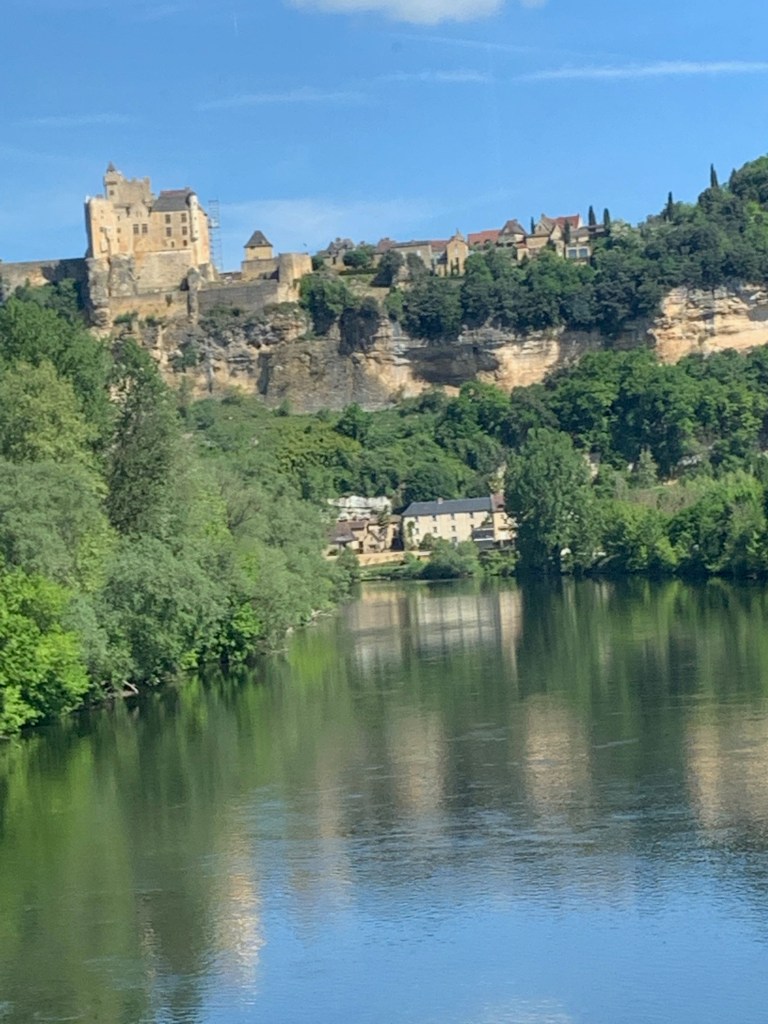
The castle, “Chateau de Beynac sits high on a rocky promontory 200 metres above the Dordogne River, across which it faces Chateau Castelnaud. It is a heavily fortified château dating originally from the 12th century but modified, strengthened and altered many times since. The fortifications failed to stop Richard the Lionheart who conquered the castle by scaling the cliff from below.”


The winding Dordogne truly was a lovely river, and the area is steeped in history and is full of ancient caves and picturesque medieval villages, of which Sarlat-la-Canéda is the most famous. “In fact, the word “Dordogne” has two different meanings. In the oldest sense of the word, it is a long river, a tributary of the Gironde, that rises in the Massif du Sancy in the Auvergne and meets the Gironde near Bordeaux.” (from about-france.com)
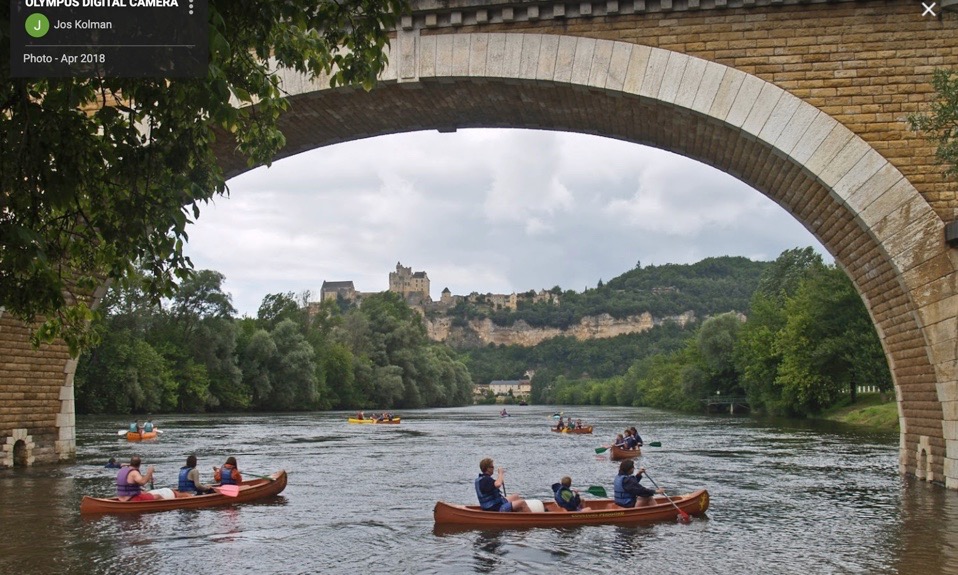
When planning this 5-week adventure back in the fall of 2018, Mandy made it known that she really wanted to visit Lascaux IV – a fantastic reproduction of a prehistoric cave containing cave paintings some 15,000 years-old. In researching places to stay near Lascaux IV, I learned about the world-famous, intact medieval village of Sarlat-la-Canéda. Once I learned that it is only 45-minutes by taxi or bus from Lascaux IV and it is a village of rich heritage and perfectly-preserved medieval buildings and layout, and, that it has been featured in more French movies than any French city outside of Paris, there was no way we weren’t going to visit!

“On account of the damage being caused by tourists, the real Lascaux cave, a UNESCO world heritage site, was closed to visitors back in 1963, but an exact replica has been carved out underground close to the original location, and the visitor experience is totally authentic.” (from about-france.com)
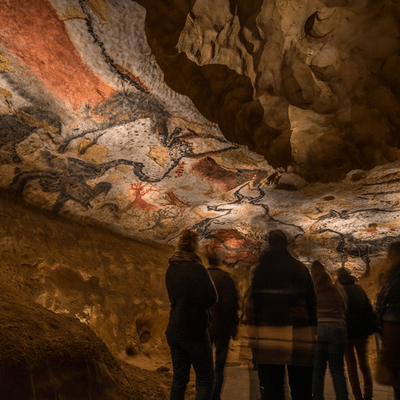
Once our single-car train arrived at the Sarlat train station, we had the whole day to explore the village of Sarlat-la-Canéda, for our tickets to Lascaux IV weren’t until the following day. The train station was about a mile from the village, so our Airbnb host was nice enough to pick us up in his tiny French car and drive us to his apartment smack dab in the center of the historic village. He drove scarily fast through the impossibly narrow and steep medieval streets to land at the front door of the restaurant he owns, sitting below our second floor Airbnb apartment in one of the town’s many medieval structures (this one built in 1560), just off the aforementioned Place de la Liberté – the main town square, where market days are held on Wednesdays.
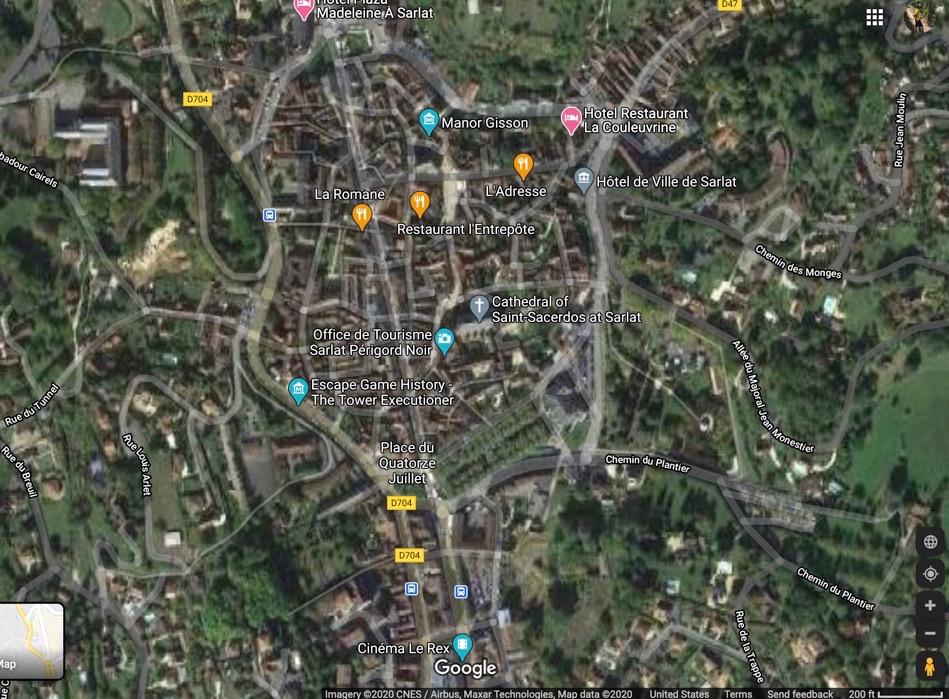
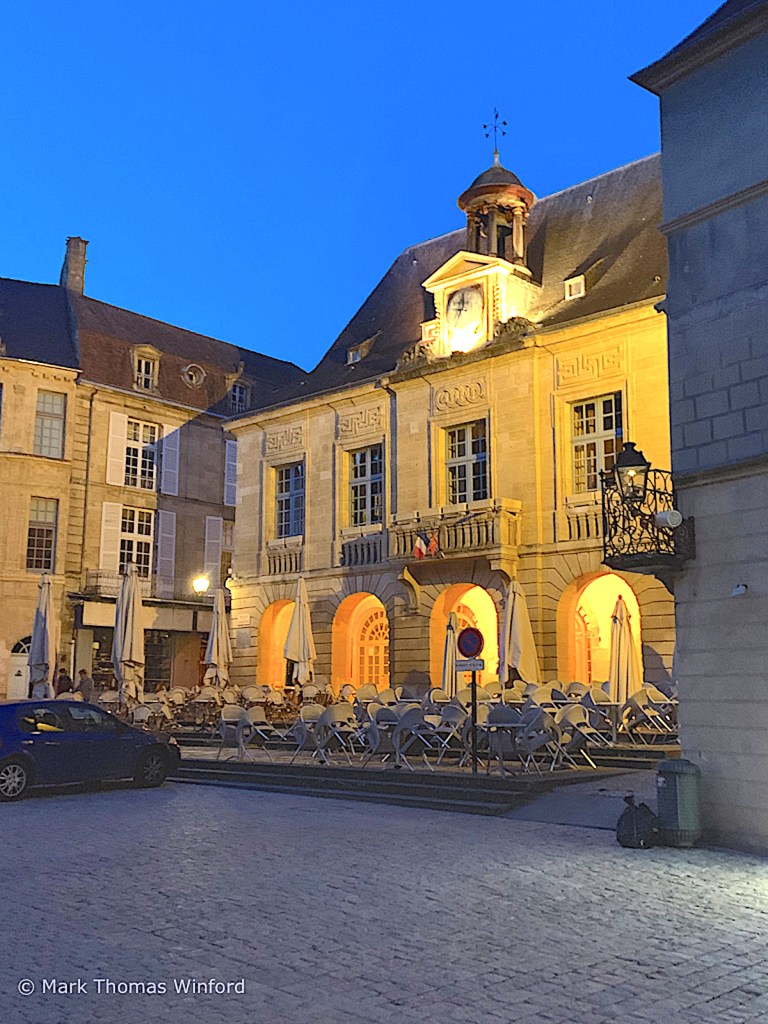
A beautiful medieval stone staircase carried us to the second floor and our lovely apartment. It was beautifully furnished with a massive stone fireplace, high beamed ceilings, plaster walls, a modern kitchen and bathroom and a window out to a private green courtyard.
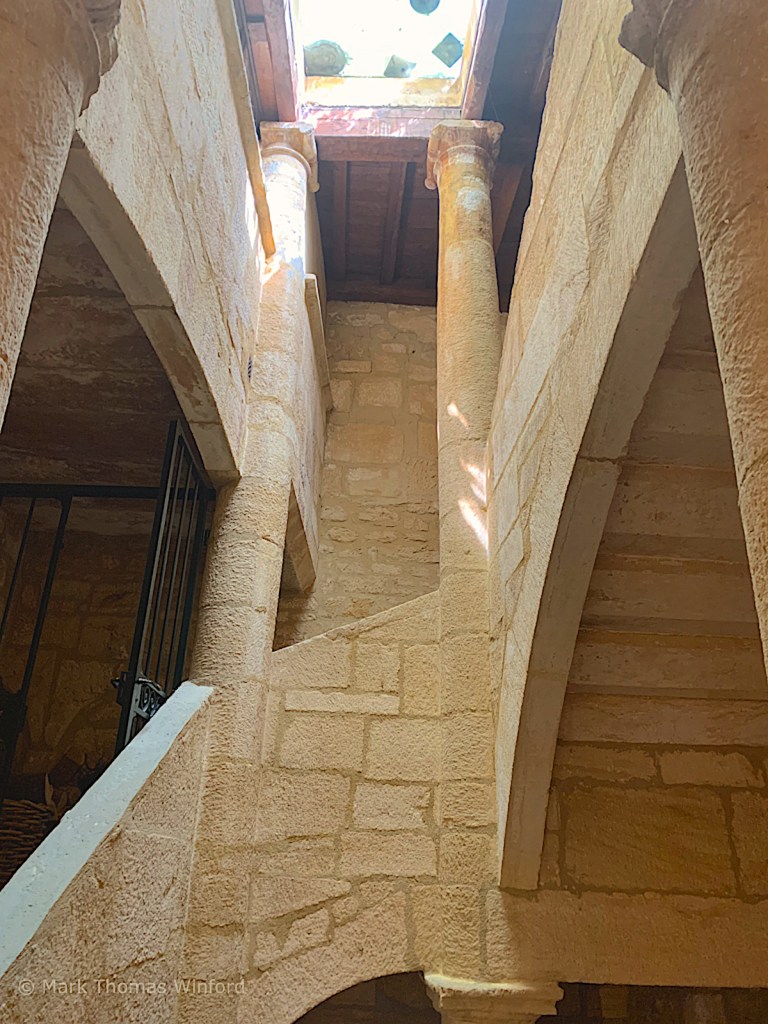

After getting settled in the apartment, we decided we were hungry for lunch, so began walking the crooked, narrow, beautiful streets lined with stone building, in search of the perfect lunch, reading posted menus as we went. We settled on a quaint restaurant with outdoor seating on this lovely, warm day that looked promising, Le Moulin du Roy.

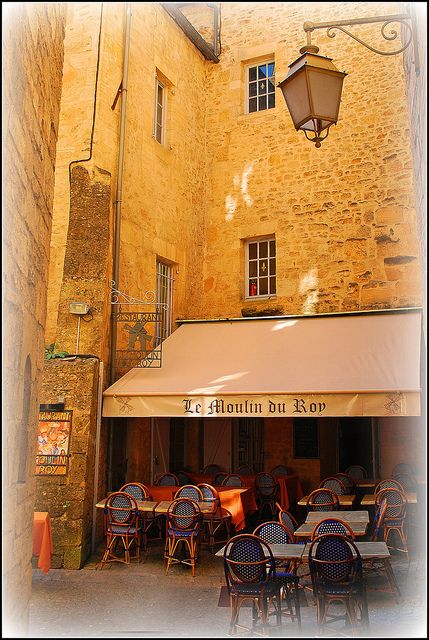
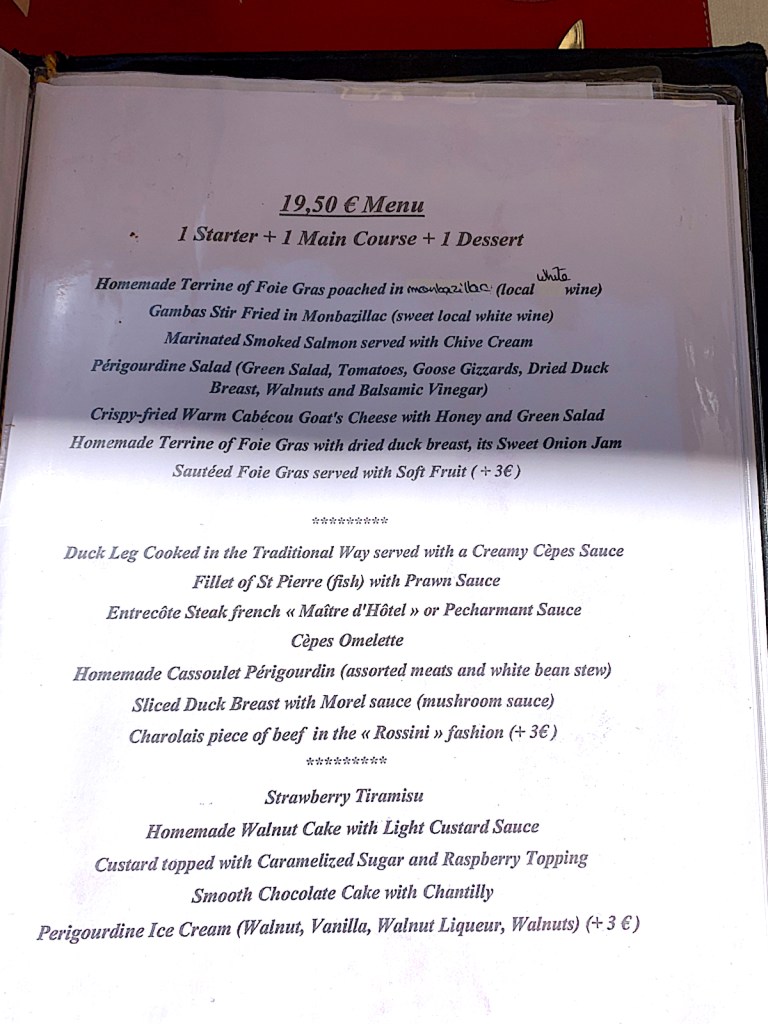
We settled in to our cozy outdoor table and ordered form the 19.50 Euros set menu, which included a starter, main course and a dessert. I ordered marinated smoked salmon with chives cream as a starter, the Fillet of St. Pierre (fish) with prawn sauce, and a slice of delicious homemade walnut cake with light custard sauce.
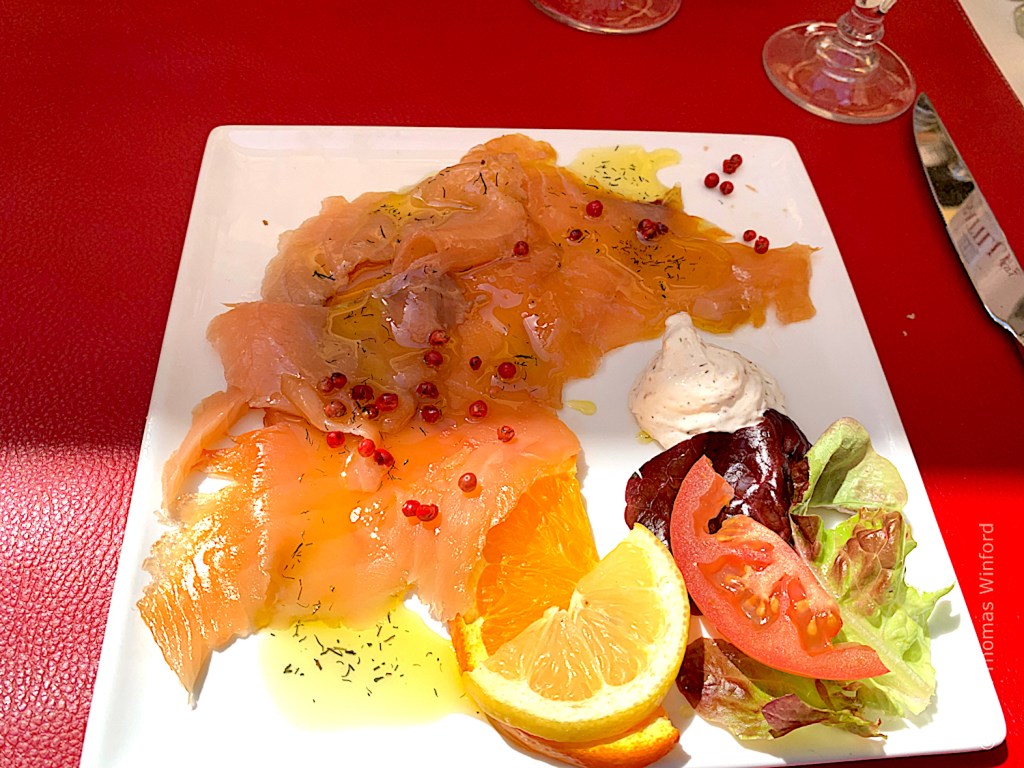
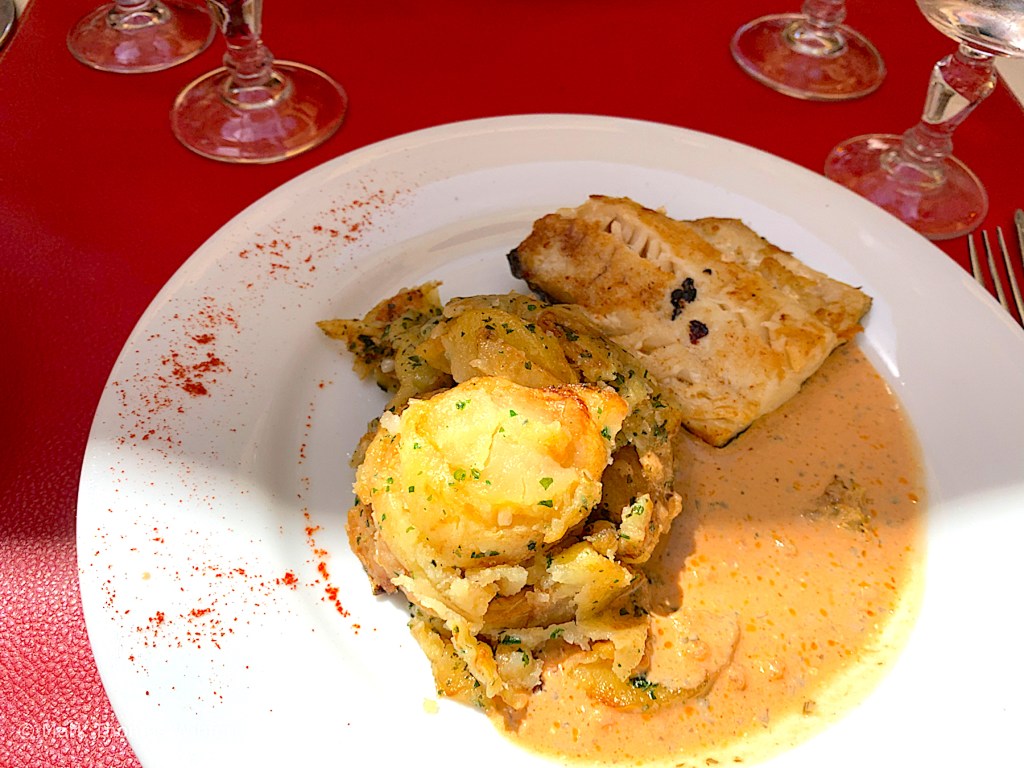
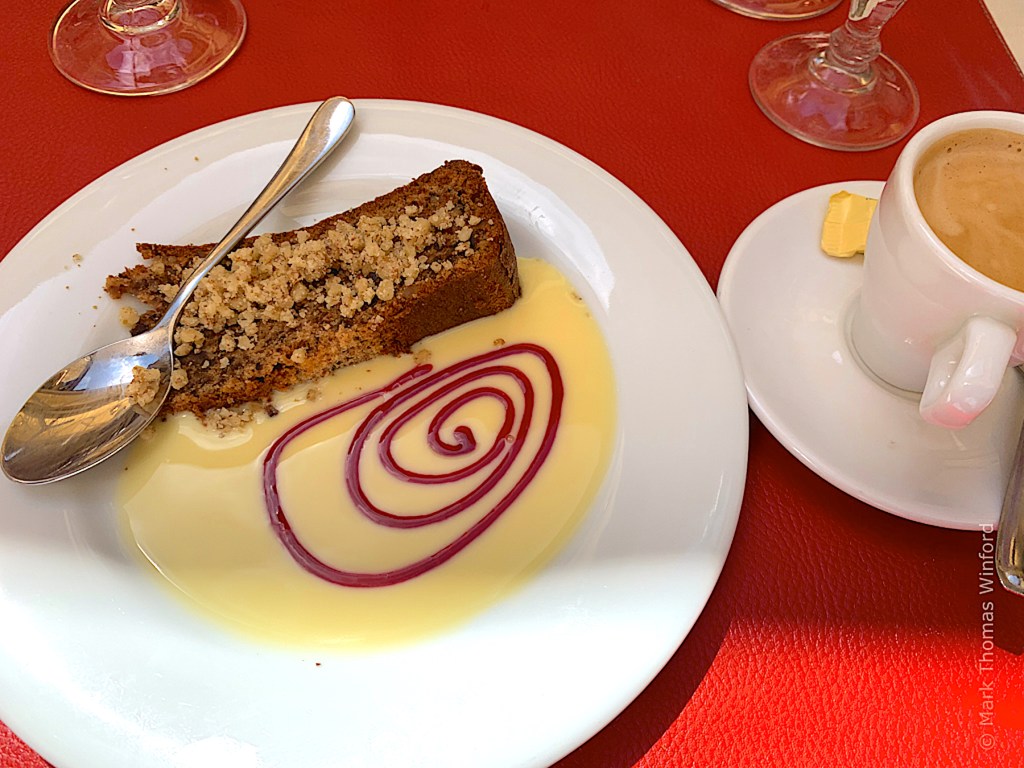
The meal was superb – made all the better by the perfectly intimate surroundings, surrounded on all sides by ancient stone buildings. Mandy had a “duck leg cooked in the traditional way with a creamy cèpes sauce,” with Perigourdine Ice Cream with walnut, vanilla and walnut liqueur.
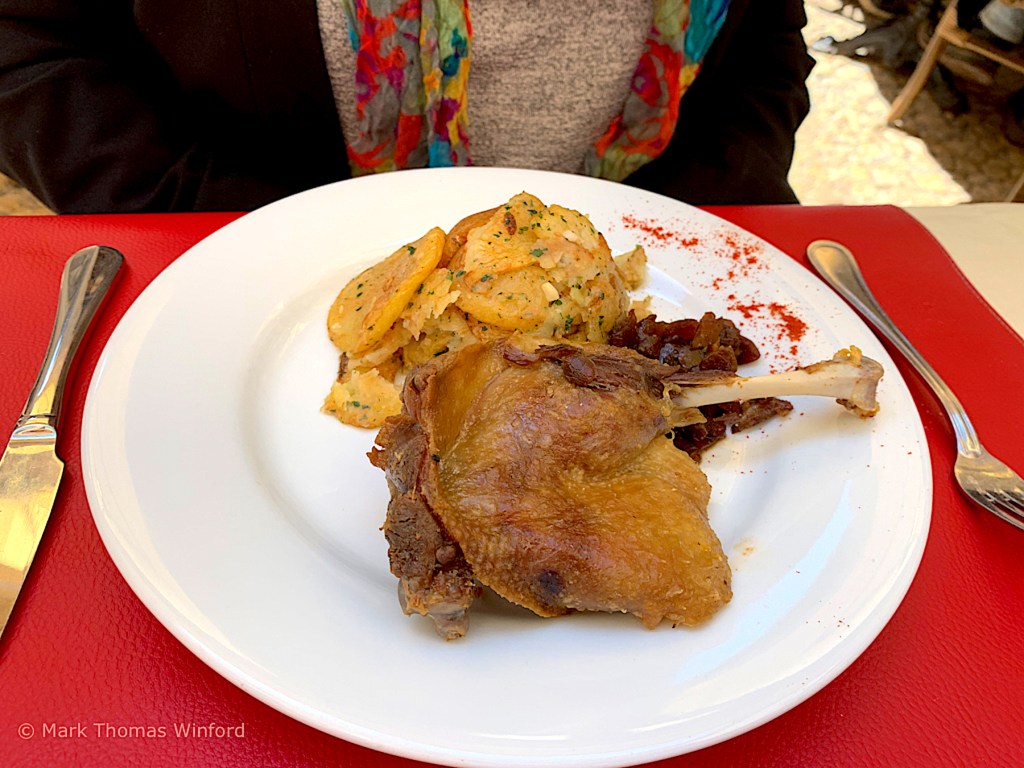

After our hearty lunch, we began exploring the fascinating streets of Sarlat-la-Canéda. My first impression was of how the gorgeous old stone buildings sort of “bled” into one another, with one type of stonework encountering another on a neighboring building, how many shapes and sizes of buildings there were, how some were ancient half-timber buildings, all were some type of stone and they featured very little ornamentation – so much so that the stone could speak for itself.
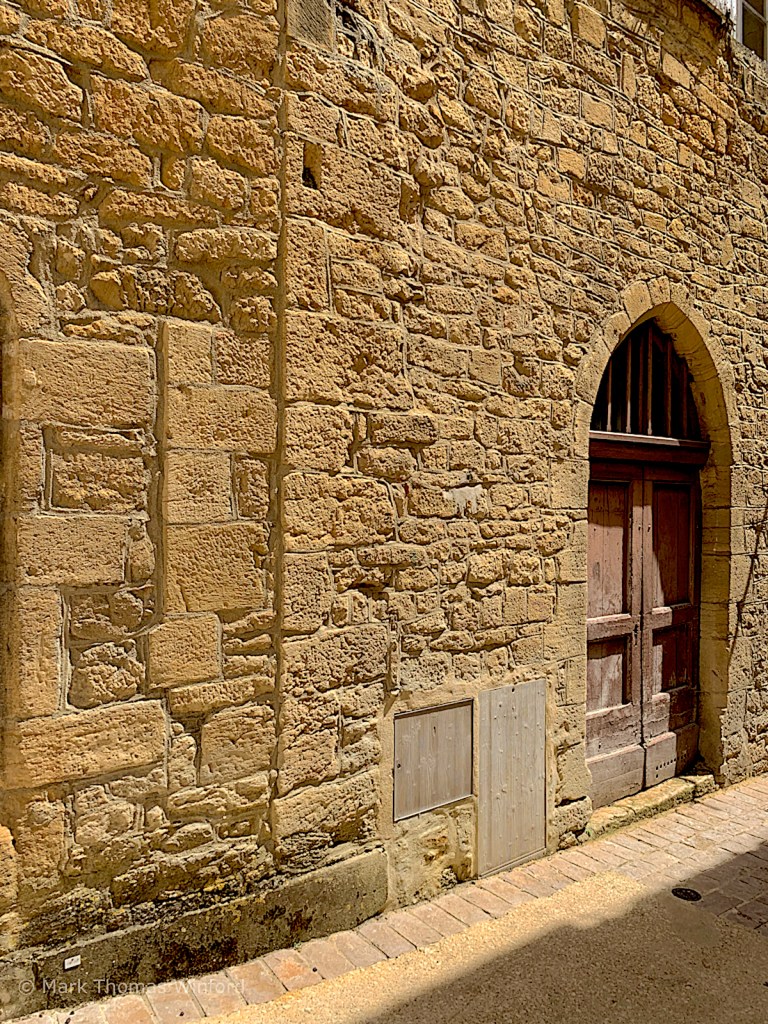

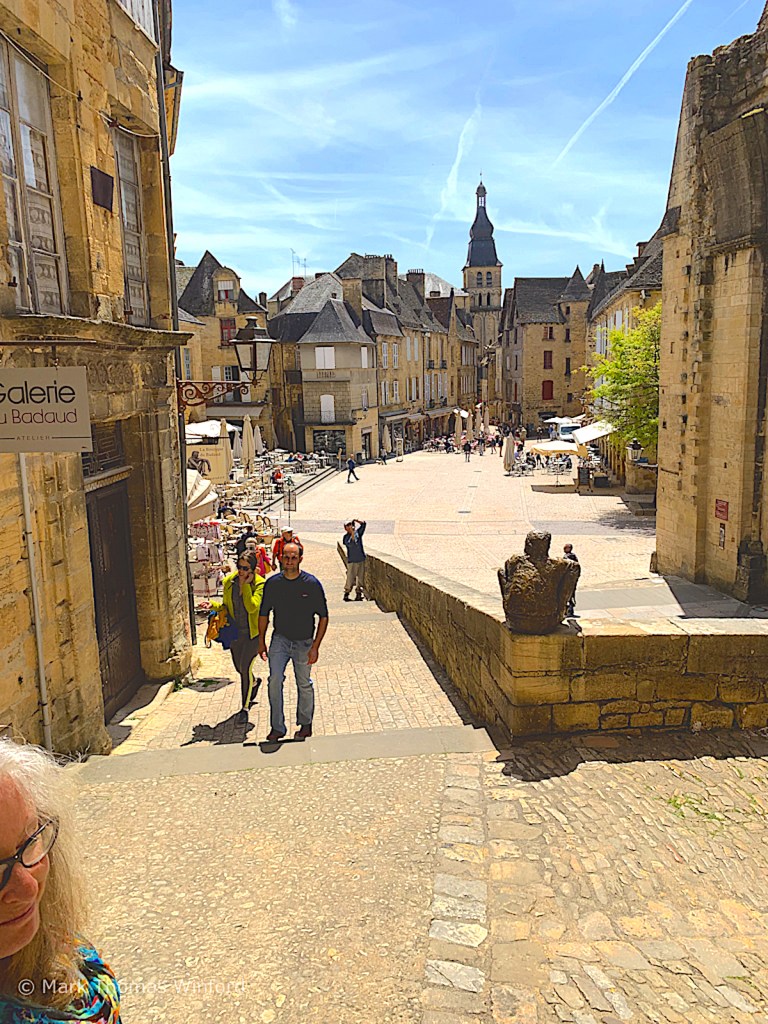

“Broadly, the pedestrianised Rue de la Republique runs the length of the old town, with mazes of narrow streets either side. The cathedral is to the south-east of Sarlat, with the attractive Place de Payrou and Hotel de la Boétie. North east is the lovely Place de la Liberté and the wonderful winding street of the Rue des Consuls.” (from northofthedordogne.com) Many of the building date from the 13th century, when the town was a thriving village of merchants.



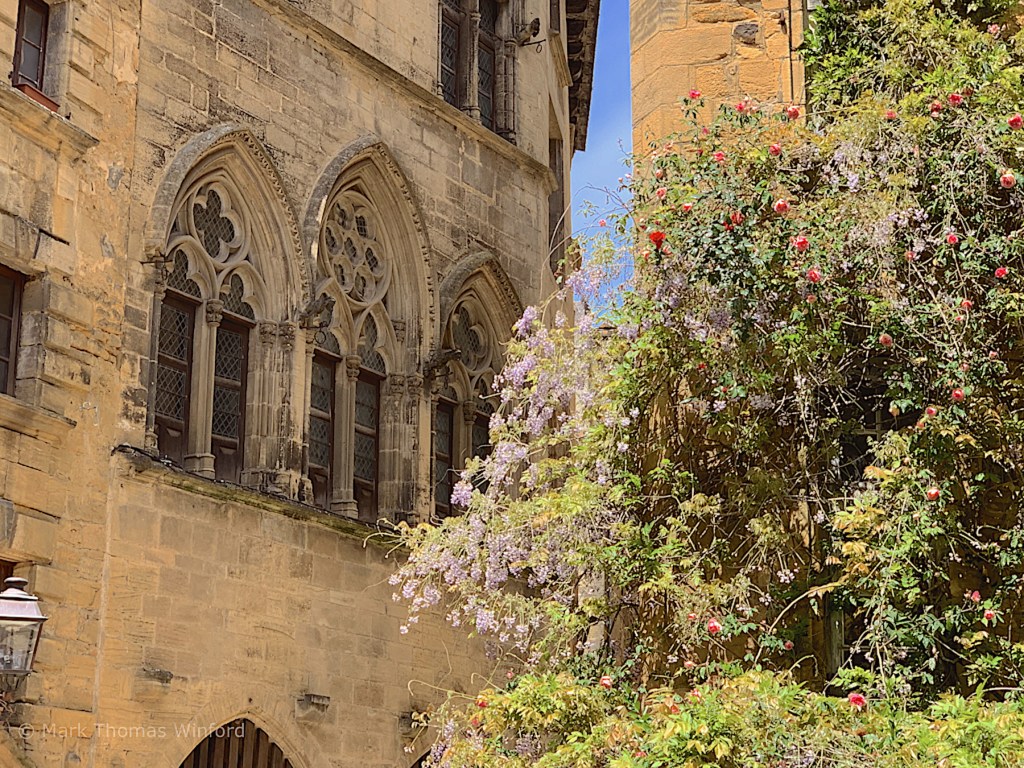
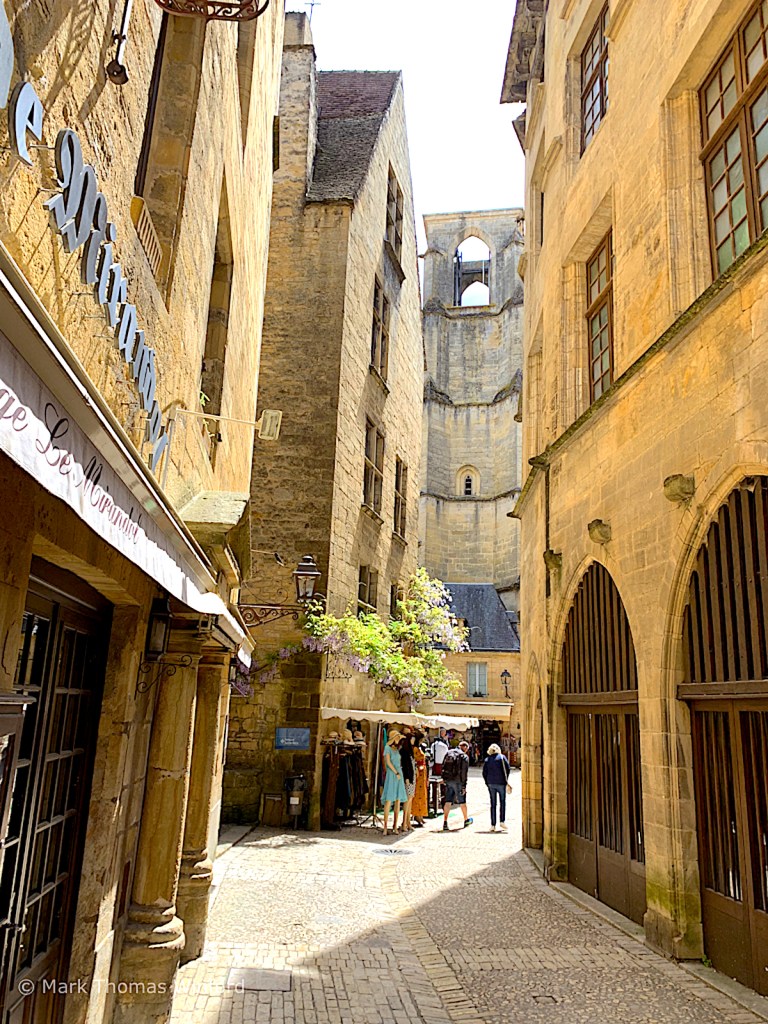
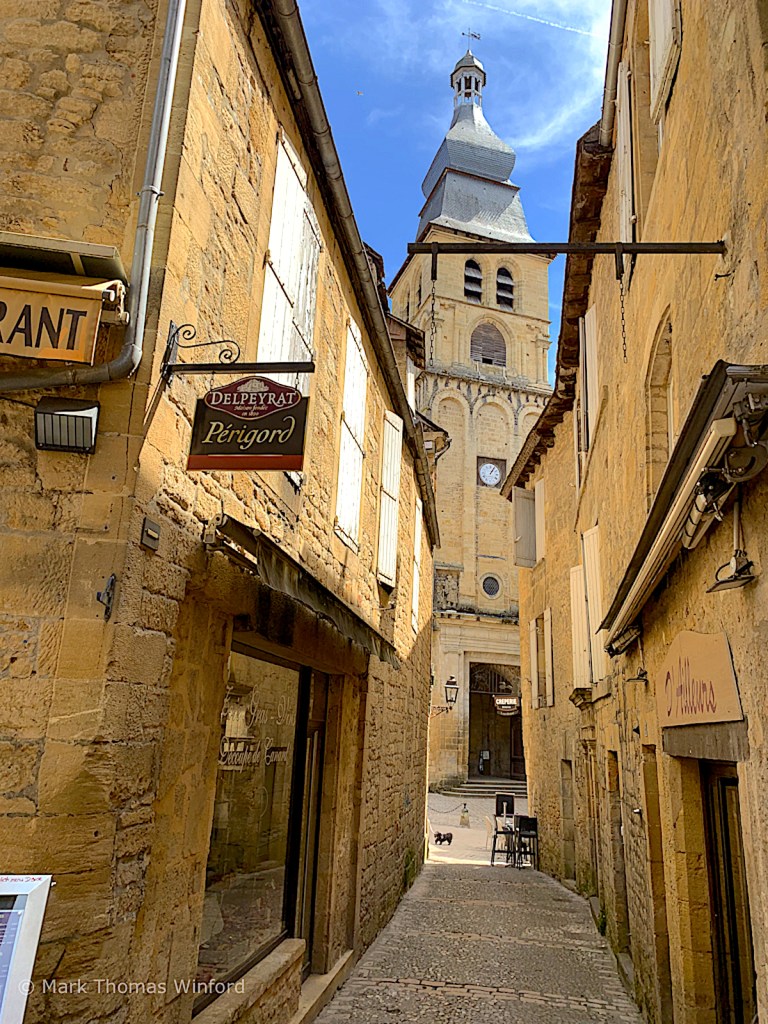
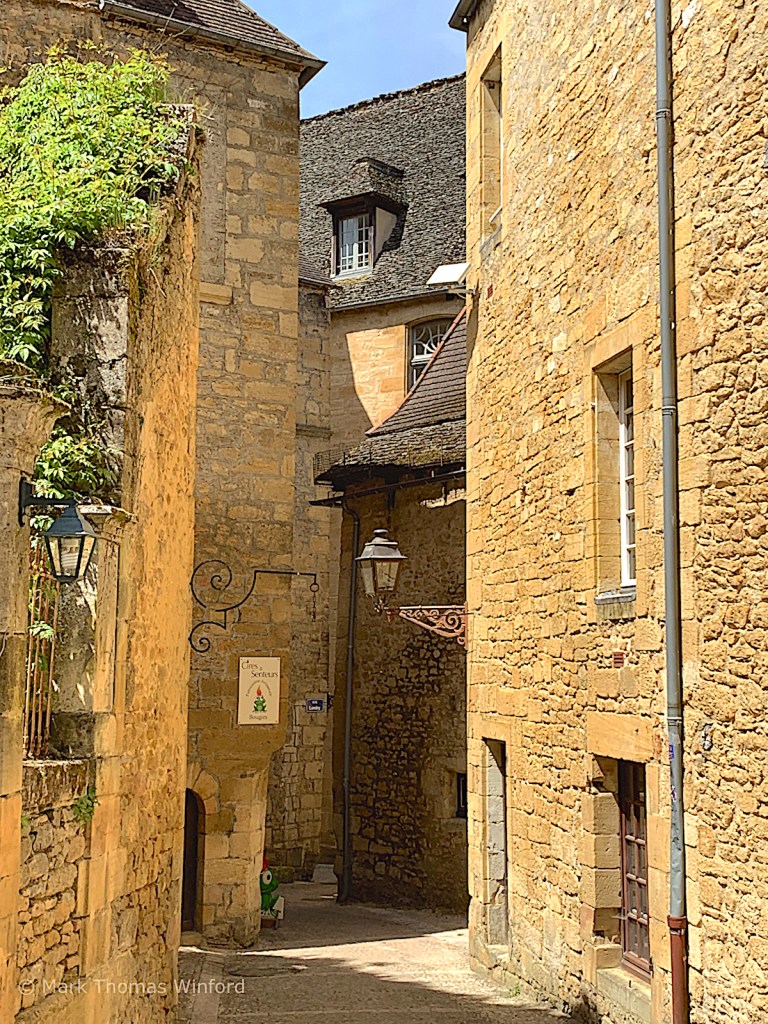
At the center of town is the medieval cathedral of Sainte-Marie, redesigned by architect Jean Nouvel. “The cathedral was originally the church of Sarlat Abbey. This abbey appears in records as early as 1081 and was one of the few in the region that was not raided by the Vikings. Over the centuries it has been added to and transformed and is now a mix of Roman, Gothic and other styles. The cour du cloitre and the nearby cour des fontaines and the cour des chanoines were all originally part of the abbey. The jardin des Enfeus just above the cathedral is the ancient abbey cemetery and there are several sarcophagus and ‘enfeus'(enfeus are tombs that are built into the church wall).” (from northofthedordogne.com)

“Up above the cathedral and the Jardin des Enfeus is an unusual structure -‘ La Lanterne des morts’, lantern of the dead. This bullet shaped building has had various roles over time including a funeral chapel.” (from northofthedordogne.com)

“Glance up from time to time as you explore the medieval cobbled streets – the roofs of the buildings in medieval Sarlat are often in ‘lauze’ – carefully cut stone – and are unusual elsewhere. (from northofthedordogne.com)
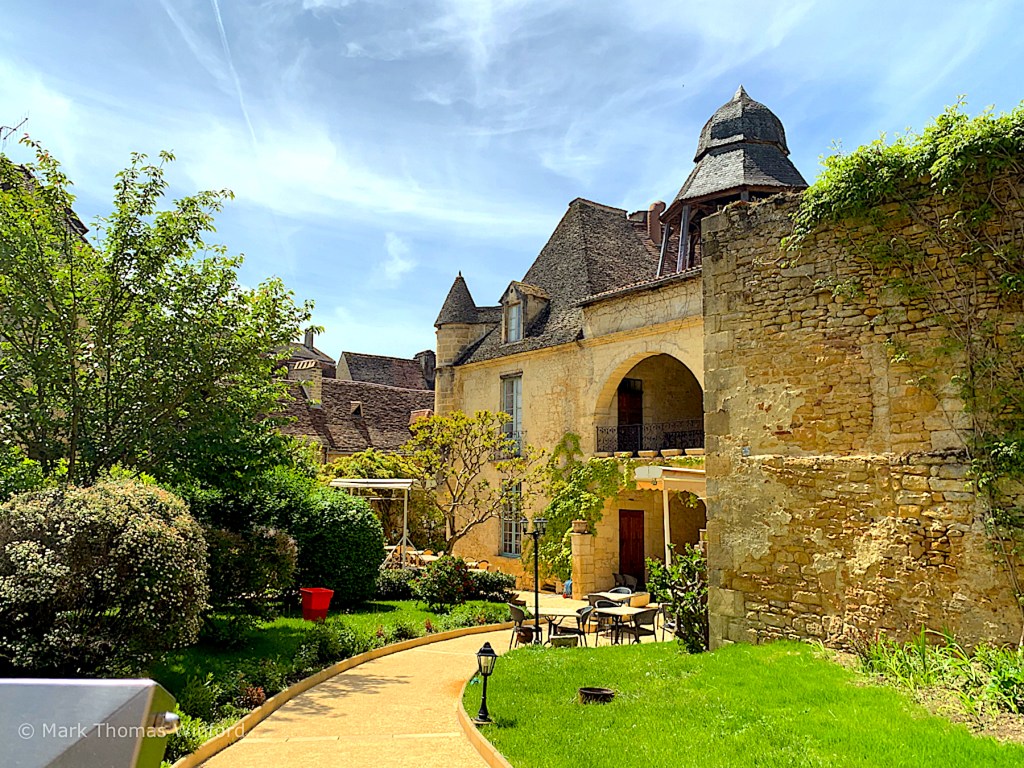
“Sarlat’s traceable past began in the 9th century with the founding of a Benedictine abbey. The abbey grew and acquired other churches in the Perigord region and with its growth a town began to build up around it. In medieval times Sarlat grew bigger and richer and became an important market town. Many of the fabulous houses in Sarlat’s old time were built during this time to house the rich merchants. Despite its fortified walls Sarlat suffered greatly during the Hundred Years War.” (from northofthedordogne.com)
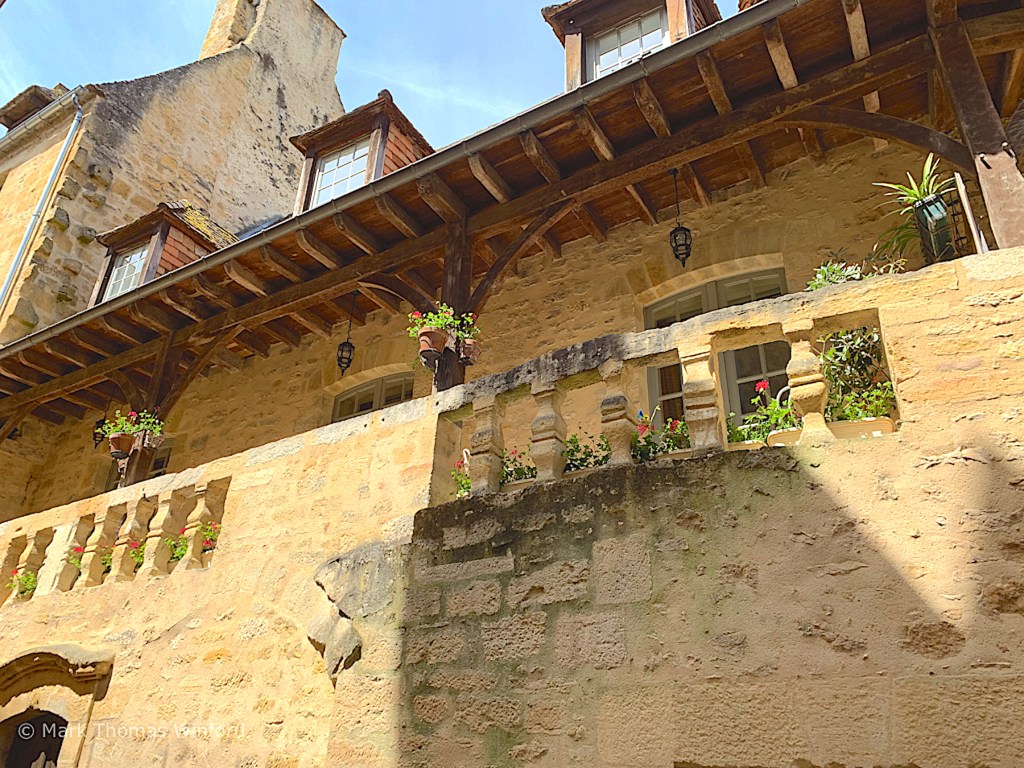
We loved some of the stone walls that had plants on top and cascading down their sides. We were also surprised to find a hidden spring fountain for drinking tucked deep beneath a stone bridge. So much wisteria everywhere.
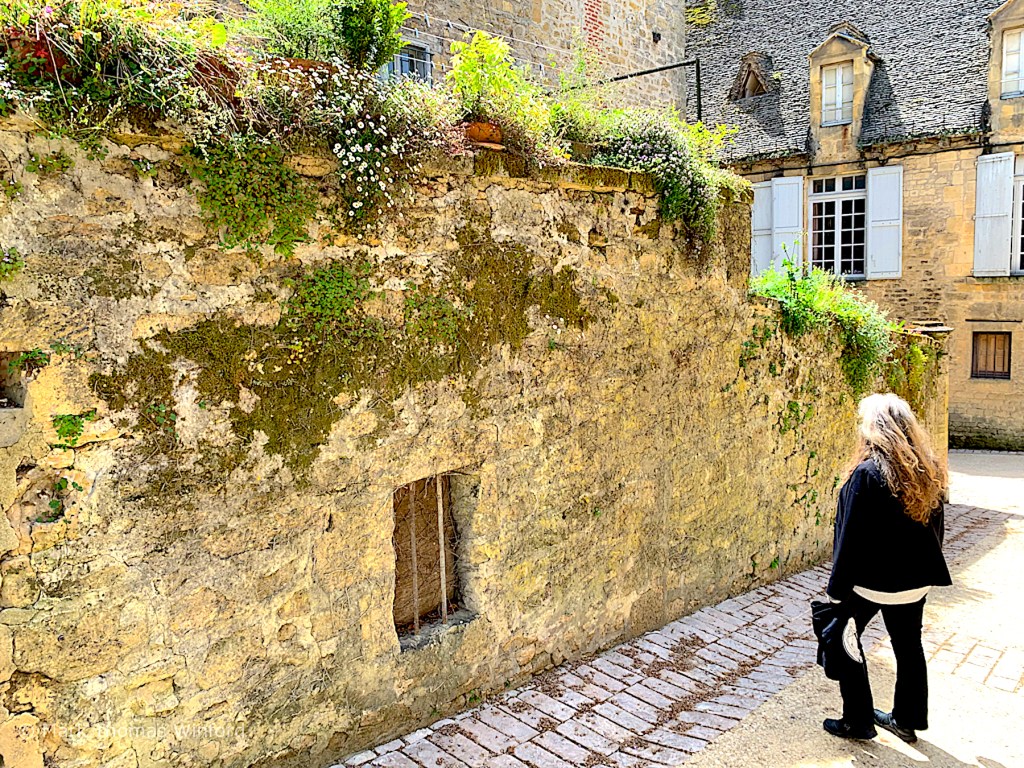

Sarlat is a gastronomic center – Sarlat-la-Canéda is famous for its truffles and its Foie Gras (force-fed fattened duck liver). “In 1962 Sarlat became the trial town of a new law called the ‘loi Malraux’ which set about to protect the patrimony of French towns. Money was provided to restore Sarlat’s fine buildings and it now has the highest density of ‘Historic Monuments’ and ‘Classified Monuments’ of any town in France. It is now classified as a ‘Town of Art and History’ and as a ‘Plus Beaux Detour’ – a town meriting a visit for its beauty. The historic centre is also on the tentative list for UNESCO World Heritage Classification.” (from northofthedordogne.com)

We had a very pricey and fancy dinner – kind of a rarity for us as we are on a budget – at Restaurant L’ Entrepôte. I had a Filet de Merlu (Filet of Hake) entrèe, elegantly prepared and served, and one of the fanciest and most beautiful desserts I’ve even eaten,. The dessert, was a beautiful, multi-layered confection interspersed with almondy chocolate, famous in the area, topped with sculpted spun sugar.
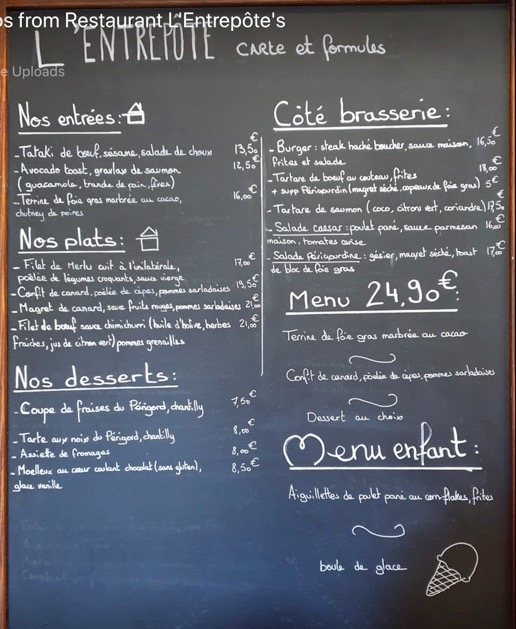





What a great little town to explore!
LikeLike
Hi Theresa – it was! We loved Sarlat-la-Canéda!
LikeLike